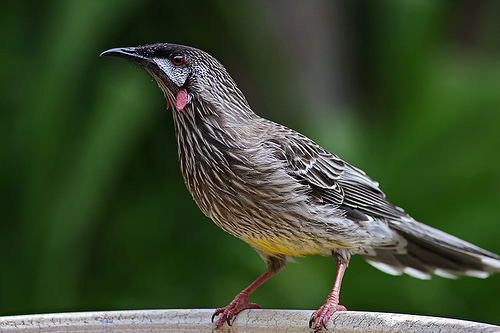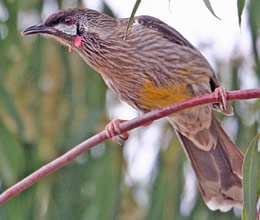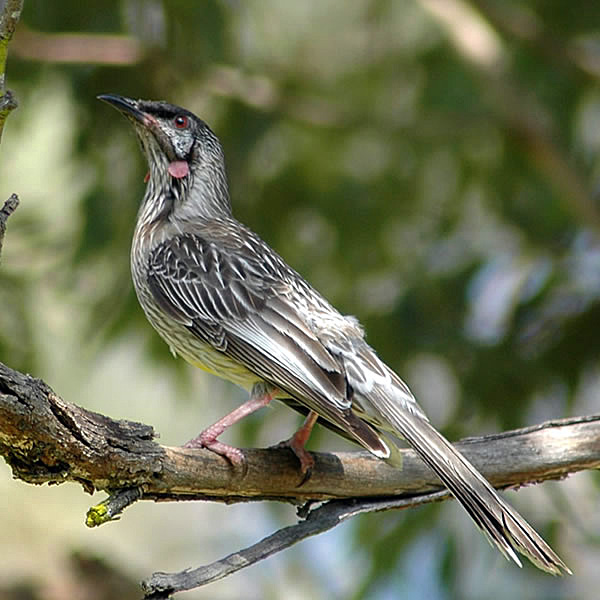
Anthochaera carunculata
TAXONOMY
Merops carunculata Shaw, 1790, Port Jackson, New South
Wales, Australia.
OTHER COMMON NAMES
English: Wattled honeyeater, gillbird; French: Mйliphage
barbe-rouge; German: Rotlappen-Honigfresser; Spanish:
Filemуn Rojo.
PHYSICAL CHARACTERISTICS
14 in (35 cm); 4 oz (120 g). Female noticeably smaller than male.
Buff underparts with white streaks and yellowish patch on belly.
Upper feathers darker and white-tipped. White patch under eye
with thin red band across chin.
DISTRIBUTION
Southern Australia, with possible gap across Nullarbor Plain;
separate subspecies in southwest and Mount Lofty Ranges of
South Australia, Kangaroo Island, and eastern Australia. Vagrant
to New Zealand.
HABITAT
Woodland and open forest, typically with eucalyptus, mallee,
heathland, parks, and gardens.
BEHAVIOR
Occur in pairs and family groups and sometimes loose flocks.
Can be noisy and aggressive but are quiet while breeding. Male
makes a harsh, raucous cough, to which female replies with a
more musical plew...plew...plew call. Make other harsh rasping
calls when nest or young threatened. Short distance migrant
and nomad.
FEEDING ECOLOGY AND DIET
Take nectar from flowers, especially eucalyptus, but also
mistletoes and a wide variety of shrubs. Also eat insects from
foliage, bark, or the ground and by aerial capture. Eat fruit less
commonly, and rarely take small reptiles and young birds.
REPRODUCTIVE BIOLOGY
Long breeding season, mostly August to December. Lay two
eggs in a stick nest in a tree. Both adults feed young, which
hatch at about 16 days and fledge after a further 16 days. Parasitized
by pallid cuckoo (Cuculus pallidus).
CONSERVATION STATUS
Not threatened.
SIGNIFICANCE TO HUMANS
One of the few Australian passerines that was hunted for food,
gillbird pie was once a favorite. They are sometimes shot when
feeding on cultivated fruit. They are successful suburban birds.
Photo Gallery of - Red wattlebird




 Animalia Life
Animalia Life